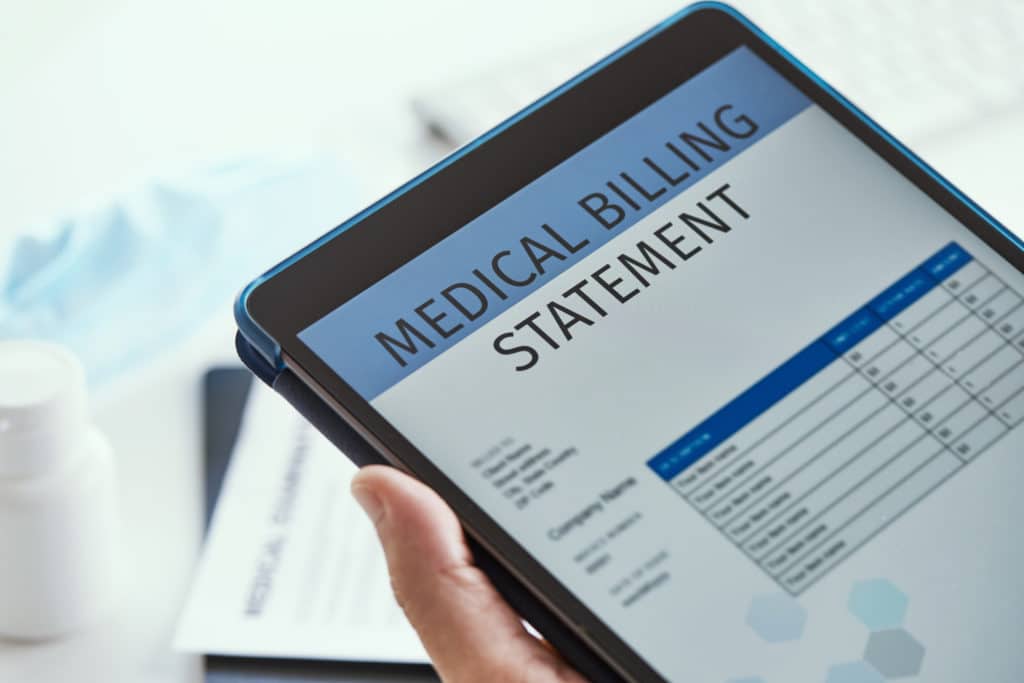Medical billing plays a critical role in the financial stability of healthcare providers. However, it’s often a challenging process that can be time-consuming, expensive, and prone to errors.
Fortunately, medical billing software offers a solution to the challenges healthcare providers face. In this blog post, we will explore the challenges of medical billing, the advantages of software, and the key features to look for in medical billing software.
Understanding Medical Billing Challenges
Medical billing is a complex process that involves managing patient data, coding, insurance claims, and regulatory compliance.
Any error in this process can lead to delayed claims or denied payments, and ultimately lost revenue. Additionally, the sheer volume of claims to process can be overwhelming, causing inefficiencies in the workflow.
The impact of billing challenges is felt by healthcare providers and patients. Although 62% of patients still prefer digital patient portals for paying their bills, pen-and-paper processes are still common throughout the patient journey.
Errors in the claims processing can be more than just an inconvenience. They can have significant consequences for patients. Delayed billing cycles and unexpected fees can lead to financial difficulties and hardships, hindering access to necessary care.
Additionally, mistakes in claims submissions add unnecessary stress to an already emotionally charged process. By minimizing potential errors in the claims processing, we can alleviate distress for our patients, colleagues, and finance departments.
The Advantages of Medical Billing Software
More and more healthcare providers have turned to medical billing software solutions to improve their billing processes. Investing in medical billing software provides numerous advantages, having transformative results.
Reduced Errors
Manual billing processes increase the risk of errors, which can cause claim denials and delayed reimbursements. With medical billing software, you can reduce the chances of errors.
The software reduces the likelihood of errors with automated features to ensure that proper codes are used, and the updated claims rules and regulations are followed. This, in turn, increases the likelihood of your claims getting approved and getting reimbursed faster.
Faster Reimbursements
Using medical billing software streamlines the process of submitting insurance claims, which means you can expect to receive reimbursement faster. The faster you get your reimbursements, the more effective your practice will be.
By using the software’s automated features, claims are sent in the appropriate format, to the correct payer, and are tracked until payment is made. This minimizes the time it takes to follow-up on claims and ensures you receive reimbursements in a timely manner.
Comprehensive Patient Data Management
Maintaining patient records is crucial in healthcare, and medical billing software can help streamline the process. The software allows you to easily track patient data, including demographics, insurance information, visit history, and billing records.
This comprehensive data management system ensures that your billing records are up-to-date and easily accessible, which can reduce any delays in the billing process.
Simplified Insurance Claims
Insurance claims can be complicated and processing them manually is a time-consuming process.
Medical billing software simplifies the process by automatically checking for errors and following up on any claim rejections. This results in a much quicker, smoother process for both you and your patients.
Saves Time and Increases Efficiency
Using medical billing software in your practice not only reduces the chances of errors but speeds up the billing and reimbursement processes, which ultimately saves you time.
The software’s automated features enable you to focus on other essential aspects of your practice, such as providing quality care to your patients.
Key Features of Effective Medical Billing Software
Choosing the right medical billing software is critical to ensuring that healthcare providers can maximize the benefits that come with it. When evaluating various software solutions, there are key features that healthcare providers should look for.
- Custom reporting: Custom reporting and analytics are crucial to measure key performance indicators (KPIs) and gain insights into your billing process. Look for software that enables you to generate reports tailored to your practice’s specific needs.
- Electronic claims submissions: Processing traditional paper claims is time-consuming and can lead to errors. Electronic claims submissions not only save time but also reduce the likelihood of errors, leading to faster claim approvals and payments.
- Data encryption: Protecting patient data should always be a top priority in medical billing software. The software should provide robust data encryption and storage that secures PHI (Personal Health Information) within multiple levels of security.
- Integrated payment processing: Medical billing software should make payment processing effortless for both patients and the practice. Choose a software solution with an integrated payment processing system that allows for various forms of payment, such as credit card, ACH, and e-checks.
- Compliance with Industry Standards and Regulations: Effective medical billing software should comply with industry standards such as HIPAA. This feature ensures that any data shared or stored within the system is secure, and your practice remains compliant with regulatory requirements.
With these key features in mind, you can use these four practical steps to tackle your medical billing challenges with software:
Step 1: Determine Your Software Needs
Before you can choose the right software solution for your practice, you need to understand your unique billing challenges. This involves identifying pain points, assessing current workflows, and gathering input from relevant stakeholders.
One straightforward way to determine your actual medical billing software needs is through surveys. Ask physicians and staff across the practice what medical billing challenges they are facing.
You could also choose to conduct in-depth interviews with a representative from each function of the medical practice for additional context and clarity.
By involving employees and other stakeholders in the process, you can secure buy-in and ensure that everyone is on the same page.
From there, create a list of essential features and functionalities that your practice needs in a medical billing software solution, such as support for multiple payers and claim scrubbing tools.
Step 2: Choose a User-Friendly Software
Once you’ve identified your software needs, it’s time to start evaluating different solutions. Medical billing staff are often required to use multiple tools and software daily.
That’s why it is important to look for software that is user-friendly, intuitive, and easy to understand. Your staff needs to be able to quickly adapt without extensive training.
When looking for user-friendly software, choose a solution that offers customization options, excellent customer support, and an interface that complements your workflow.
Be sure to also consider its integration capabilities. Will it integrate seamlessly with your EHR system, or will you need to implement additional workarounds to accommodate the new software?
Step 3: Ensure Data Security and Compliance
The healthcare industry is subject to strict regulatory standards. Your medical billing software solution must meet the standards by safeguarding patient data under the Health Insurance Portability and Accountability Act (HIPAA).
A high-quality, cloud-based medical billing technology solution is one of the easiest ways to help ensure your practice is HIPAA compliant. By storing your patient and billing data in cloud-based software from a trusted vendor, you can help protect your data from online threats.
Medical billing software automatically backs up critical data, and ensures your software is always up to date. Additionally, HIPAA-compliant medical billing technology will protect patient information by only making it available to approved staff.
Step 4: Streamline Billing Cycles and Payments
The last step is to leverage your medical billing software solution to streamline your billing and payment cycles. Automated billing workflows can help reduce manual errors and delays, resulting in faster reimbursements and better cash flow.
Consider setting up automatic reminders for patients with outstanding balances, invoicing, and follow-up processes. Additionally, use data analytics tools to monitor key metrics, such as denial rates and patient A/R, so you can refine your billing processes over time.
Continuous Improvement and Adaptation to Change
Medical billing software is a key component of the successful operation of healthcare organizations; it permeates the day-to-day activities. That is why it is vital to incorporate the perspectives given by frontline health workers.
Making sure their points of view are examined, each step of the way leads to a better solution. Engaging end users ensures the system is tailored to their needs while determining the most effective way to deploy it.
Ultimately, keeping employees in the loop throughout the process helps foster a cohesive team with excellent communication between all parts of the organization.
Healthcare providers can effectively navigate the complex landscape of medical billing by utilizing appropriate software. This approach ensures greater accuracy, efficiency, and peace of mind.
Embracing technological solutions not only optimizes internal processes but also minimizes billing errors and delays, thereby enhancing the patient experience.
Get Your Claims Paid Faster with CollaborativeMD
At CollaborateMD, we prioritize the prompt payment of your medical claims. Our cloud-based medical billing software streamlines billing procedures, eliminates complex workflows, and offers transparent reporting tools.
We help with the management of your billing company and revenue cycle, making it easier to grow your practice while improving patient satisfaction. Learn more about how CollaborativeMD can tackle your billing challenges and schedule a demo today!




